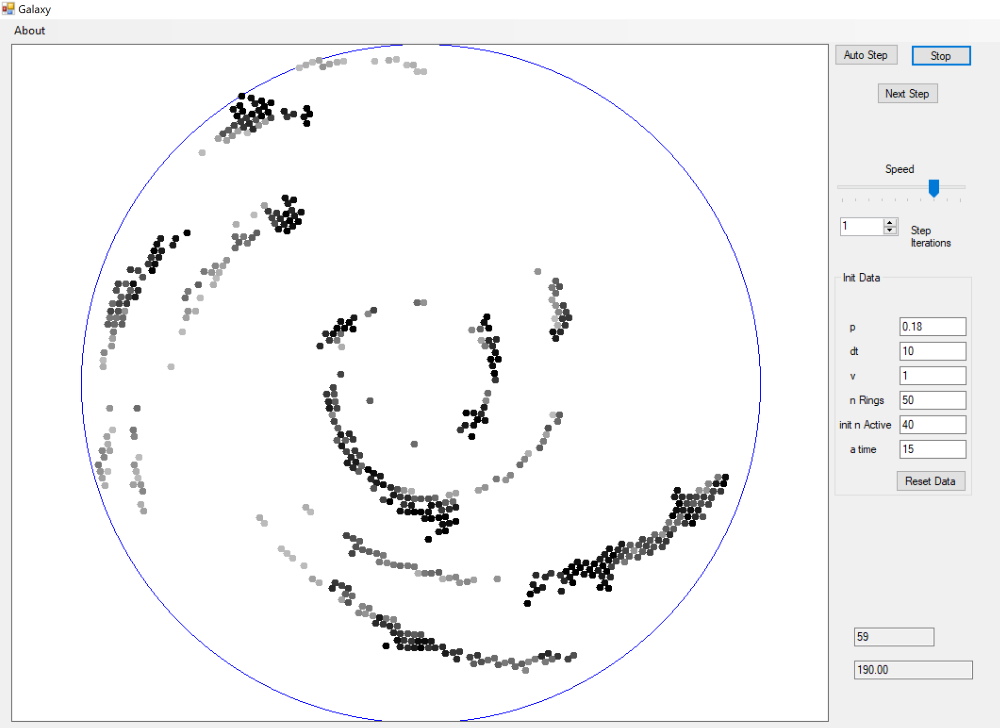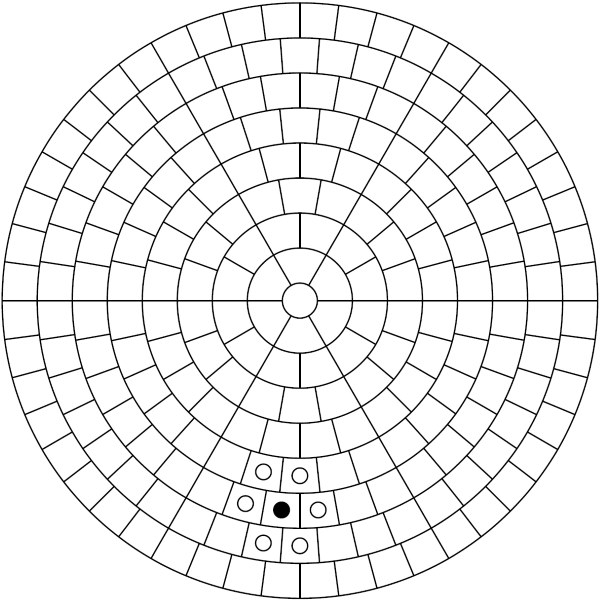Simulation of collective behavior of the complex nonlinear system Spiral Galaxy. A typical galaxy generated by my code is shown below.
The theory of self-propagating star formation is based on the importance of the mechanism of collective behavior. Rather than determining which regions have the necessary conditions for star formation, we summarize all the uncertainty and variability in a single parameter p, the probability that a supernova explosion in one region gives rise to star formation in a neighboring region.
Each cell has the same area and six nearest neighbors on the average. The filled circle denotes an active region of star formation. At the next time step, it can induce star formation in cells containing open circles. As time passes, the neighbors in adjacent rings change because of differential rotation.
We divide a galaxy into concentric rings which are divided into cells of equal size. Initially, a small number of cells are activated. Each cell corresponds to a region of space that is the size of a giant molecular cloud and moves with the same tangential velocity v. The angular velocity is given by omega = v/r, where r is the distance of the ring from the center of the galaxy. At each time step, the active cells activate neighboring cells with probability p and then become inactive. Then the rings are rotated, and the process is repeated again in the next time step. At each time step, cells that have been active within the last 15 time steps are displayed as filled boxes, with the size of each box inversely proportional to the time since the cell become active.

